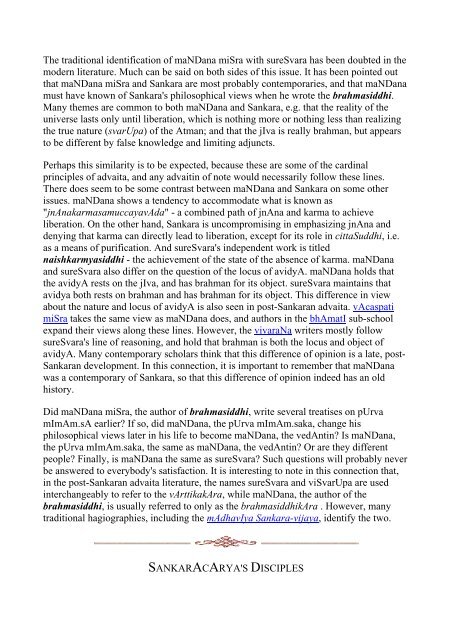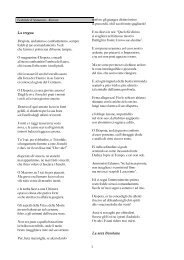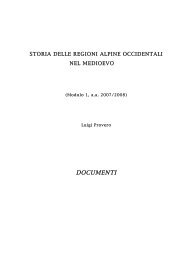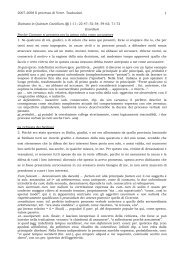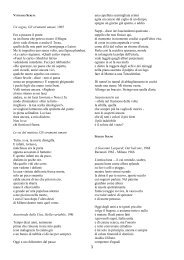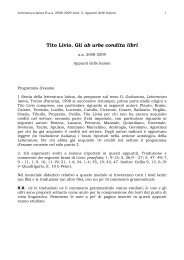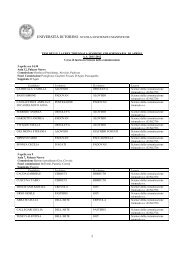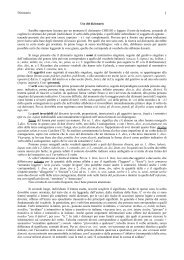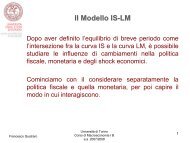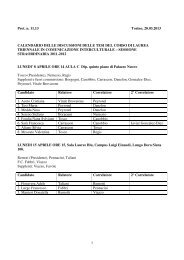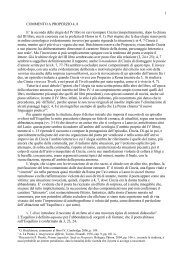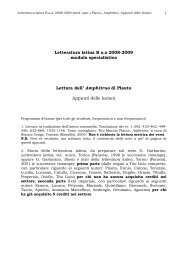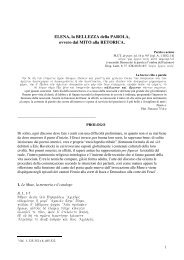ajAti vAda
ajAti vAda
ajAti vAda
You also want an ePaper? Increase the reach of your titles
YUMPU automatically turns print PDFs into web optimized ePapers that Google loves.
The traditional identification of maNDana miSra with sureSvara has been doubted in the<br />
modern literature. Much can be said on both sides of this issue. It has been pointed out<br />
that maNDana miSra and Sankara are most probably contemporaries, and that maNDana<br />
must have known of Sankara's philosophical views when he wrote the brahmasiddhi.<br />
Many themes are common to both maNDana and Sankara, e.g. that the reality of the<br />
universe lasts only until liberation, which is nothing more or nothing less than realizing<br />
the true nature (svarUpa) of the Atman; and that the jIva is really brahman, but appears<br />
to be different by false knowledge and limiting adjuncts.<br />
Perhaps this similarity is to be expected, because these are some of the cardinal<br />
principles of advaita, and any advaitin of note would necessarily follow these lines.<br />
There does seem to be some contrast between maNDana and Sankara on some other<br />
issues. maNDana shows a tendency to accommodate what is known as<br />
"jnAnakarmasamuccaya<strong>vAda</strong>" - a combined path of jnAna and karma to achieve<br />
liberation. On the other hand, Sankara is uncompromising in emphasizing jnAna and<br />
denying that karma can directly lead to liberation, except for its role in cittaSuddhi, i.e.<br />
as a means of purification. And sureSvara's independent work is titled<br />
naishkarmyasiddhi - the achievement of the state of the absence of karma. maNDana<br />
and sureSvara also differ on the question of the locus of avidyA. maNDana holds that<br />
the avidyA rests on the jIva, and has brahman for its object. sureSvara maintains that<br />
avidya both rests on brahman and has brahman for its object. This difference in view<br />
about the nature and locus of avidyA is also seen in post-Sankaran advaita. vAcaspati<br />
miSra takes the same view as maNDana does, and authors in the bhAmatI sub-school<br />
expand their views along these lines. However, the vivaraNa writers mostly follow<br />
sureSvara's line of reasoning, and hold that brahman is both the locus and object of<br />
avidyA. Many contemporary scholars think that this difference of opinion is a late, post-<br />
Sankaran development. In this connection, it is important to remember that maNDana<br />
was a contemporary of Sankara, so that this difference of opinion indeed has an old<br />
history.<br />
Did maNDana miSra, the author of brahmasiddhi, write several treatises on pUrva<br />
mImAm.sA earlier? If so, did maNDana, the pUrva mImAm.saka, change his<br />
philosophical views later in his life to become maNDana, the vedAntin? Is maNDana,<br />
the pUrva mImAm.saka, the same as maNDana, the vedAntin? Or are they different<br />
people? Finally, is maNDana the same as sureSvara? Such questions will probably never<br />
be answered to everybody's satisfaction. It is interesting to note in this connection that,<br />
in the post-Sankaran advaita literature, the names sureSvara and viSvarUpa are used<br />
interchangeably to refer to the vArttikakAra, while maNDana, the author of the<br />
brahmasiddhi, is usually referred to only as the brahmasiddhikAra . However, many<br />
traditional hagiographies, including the mAdhavIya Sankara-vijaya, identify the two.<br />
SANKARACARYA'S DISCIPLES


